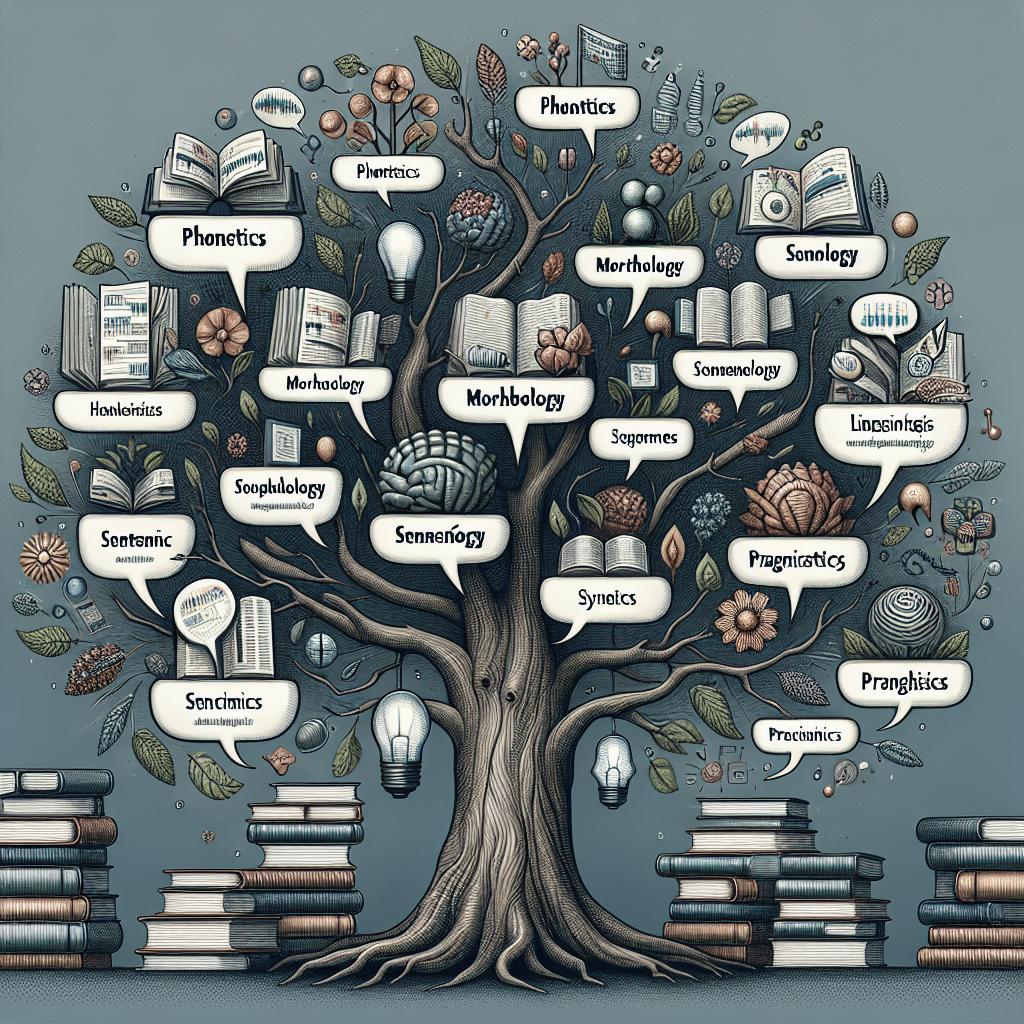<>
Understanding the role of prosody in communication is essential for grasping the nuances of spoken language. Prosody, a critical component of phonetics and linguistics, refers to the rhythm, stress, and intonation patterns in speech, contributing significantly to how messages are interpreted and conveyed. This comprehensive guide delves into the facets of prosody, exploring its definition, attributes, and types. We examine how prosodic features such as intonation, stress, tempo, and pauses shape the effectiveness of communication. Highlighting their importance, we discuss their cognitive implications, discourse role, and related disorders, culminating in a look at the neuroscience behind prosodic processing. With these insights, readers will understand how prosody influences grammar, syntax, and communicative intent, creating a dynamic interplay between language and cognition.
Overview of Prosody
Definition and Scope of Prosody
Prosody refers to the patterns of rhythm, stress, and intonation in speech. It encompasses the various vocal elements that aren’t captured by phonetic transcription alone but are crucial for conveying meaning and emotion. This includes how high or low one’s voice pitches, how fast or slow one speaks, and where pauses occur within utterances. The scope of prosody isn’t limited to just linguistics but extends to psychology, cognitive science, and even artificial intelligence. By understanding prosody, researchers and practitioners can gain insights into human communication, emotional expression, language learning, and more, making this an interdisciplinary pursuit.
Relation to Linguistics and Phonology
In linguistics, prosody is integral to phonology, the study of the sound system of languages. While phonology typically concerns the systematic organization of sounds, prosody deals with the suprasegmental aspects—those features of speech that go beyond individual vowels and consonants. Linguists examine prosody to understand how it influences syntax and semantics. For example, a change in intonation can turn a statement into a question or indicate sarcasm. This interplay emphasizes why prosody is considered vital to comprehending how language functions at both a theoretical and practical level.
Attributes of Prosody
The primary attributes of prosody include intonation, stress, rhythm, pitch, and tempo. Each of these elements functions together to create patterns that listeners use to interpret speech. Intonation refers to the rise and fall of pitch, stress highlights certain syllables or words, and rhythm provides the underlying beat of speech. Tempo, or speaking rate, affects the pacing and understanding of verbal interactions. Beyond these primary attributes, prosody also involves aspects like speech loudness and voice quality, which can influence the emotional tone of a message. By mastering these characteristics, speakers can manipulate how their messages are received, aiding in clearer and more compelling communication.
Types of Prosody
Several types of prosody are distinguished by their function and context. Phonological prosody organizes larger units of speech, like sentences or phrases, into patterns that help convey meaning. Lexical-prosody applies to individual words, affecting word stress and pitch patterns to distinguish between meanings, especially in tonal languages. There’s also expressive prosody, which deals with the emotional tone of speech. For instance, a monotone voice can indicate boredom, while a bright, varied intonation suggests enthusiasm. Understanding these various forms of prosody allows for a fuller appreciation of how nuanced human communication can be.
Prosodic Features of Speech
Intonation and Its Effects
Intonation refers to the variation in pitch while speaking. It’s one of the most noticeable aspects of prosody and serves multiple roles in communication. Intonation patterns can signal questions, indicate surprise, or convey sarcasm. For instance, a rising intonation at the end of a sentence typically suggests a question in English. Beyond conveying semantic information, intonation also impacts listener perception. A speaker’s intonation can reveal their attitude or emotional state, adding a layer of meaning that complements the spoken words.
Stress and Its Role in Communication
Stress is the emphasis placed on certain syllables or words within speech, altering their prominence. Stress patterns can change word meanings; for example, the noun ‘record’ (as in a vinyl album) differs from the verb ‘record’ (as in to capture audio) primarily due to stress placement. In communication, stress helps to highlight key information, directing the listener’s attention. It can also indicate syntactic structure, making complex sentences easier to process. Thus, mastering stress patterns is crucial for effective and clear verbal communication.
Tempo and Rhythm in Speech
Tempo in speech refers to the rate at which spoken words are delivered. A faster tempo might convey urgency or excitement, while a slower tempo can suggest thoughtfulness or seriousness. The rhythm, or the pattern of stresses and pauses, often aligns with the natural flow of conversation. Effective speakers adjust their tempo and rhythm to match the context and audience. In public speaking or storytelling, a well-managed tempo keeps the audience engaged, while rhythmic variations add a musical quality to speech, making it more pleasant to listen to.
Pause and Chunking: Organizing Speech
Pauses play a critical role in organizing speech into manageable units or ‘chunks.’ These breaks can occur between phrases or sentences, aiding in comprehension by giving listeners time to process information. Strategic pauses also add emphasis and can be used for dramatic effect. Chunking refers to grouping words into segments that form coherent units of meaning. This technique helps in retaining information and ensuring clear communication. Proper use of pauses and chunking can greatly enhance the listener’s ability to follow and understand spoken language.
Importance of Prosodic Features of Speech
Prosodic features are vital in ensuring effective communication, aiding in the conveyance of emotions, attitudes, and emphasis. They provide context that helps listeners interpret the intended meaning of words. For instance, a flat intonation may suggest a lack of interest, while a lively pitch variation could indicate excitement or enthusiasm. In social interactions, prosody plays a fundamental role in expressing politeness, irony, or humor. For professionals in fields like broadcast journalism or public speaking, mastering prosodic features can significantly enhance their ability to engage and persuade their audience effectively.
Cognitive Aspects of Prosody
Impact on Grammar and Syntax
Prosody heavily influences the interpretation of grammatical and syntactic structures. For instance, punctuation marks in writing have spoken counterparts in prosodic features like intonation contours and pauses. A statement’s prosodic features can clarify ambiguous sentences and ensure that listeners grasp the intended meaning. The cognitive processing of prosody extends to parsing complex sentences. During speech perception, listeners use prosodic cues to break down and understand syntactic boundaries, facilitating smoother comprehension and communication.
Prosody in Focus and Emphasis
Prosody is crucial in highlighting focus and emphasis within a sentence. By altering intonation or stress, speakers can draw attention to specific parts of their message. This can affect the listener’s interpretation by underscoring what the speaker considers most important. From a cognitive perspective, prosody aids in memory retention by structuring information in a way that’s easier to process and recall. Emphasized elements are more likely to be remembered, proving valuable in educational and professional settings.
Prosody in Discourse
Prosody organizes discourse by signalling shifts in topics, introducing new information, and creating coherence across speech. In conversation, prosodic patterns help manage turn-taking, indicate agreement or disagreement, and provide feedback, making interactions more fluid and cohesive. In narrative forms like storytelling or public speaking, prosody enriches the discourse by adding emotional color and keeping the audience engaged. The use of varied prosodic features can transform monotonous speech into a lively and compelling narrative, ensuring the speaker’s message is effectively conveyed.
Disorders Related to Prosody
Prosodic disorders can significantly impair communication, affecting both the production and perception of prosodic cues. Conditions like autism spectrum disorder, aphasia, and certain types of dysarthria often involve prosodic difficulties, leading to challenges in expressive and receptive communication. Treatment for prosodic disorders typically involves speech therapy, which focuses on improving the recognition and production of prosodic features. Understanding these disorders also contributes to better diagnostic criteria and more effective interventions, enhancing the quality of life for affected individuals.
Neuroscience Perspectives on Prosody
From a neuroscience perspective, prosody’s processing involves various brain regions, including the right hemisphere, which is particularly important for emotional and melodic aspects of speech. Studies using functional MRI and other imaging techniques show that the brain intricately coordinates multiple areas to decode and produce prosodic features. Research in this field not only advances our understanding of normal speech processing but also sheds light on neurological conditions that affect communication. Insights gained from neuroscience can lead to better therapeutic approaches and technologies, such as improved speech synthesis systems in AI.
Summary of Main Points
| Section | Main Points |
|---|---|
| Definition and Scope of Prosody | Prosody refers to rhythm, stress, and intonation; it spans multiple disciplines, offering insights into communication and emotional expression. |
| Relation to Linguistics and Phonology | Prosody is integral to phonology, influencing syntax and semantics, thus playing a vital role in the theoretical and practical understanding of language. |
| Attributes of Prosody | Prosody includes intonation, stress, rhythm, pitch, and tempo, all of which affect how messages are conveyed and perceived. |
| Types of Prosody | Phonological, lexical, and expressive prosody each serve different functions in communication, from conveying meaning to expressing emotion. |
| Prosodic Features of Speech | Intonation, stress, tempo, and pauses all contribute to the effectiveness of communication, influencing how spoken language is interpreted. |
| Importance of Prosodic Features | Prosodic features are crucial for emotional expression, emphasis, and listener engagement, making them essential in professional communication. |
| Cognitive Aspects of Prosody | Prosody aids in grammar and syntax interpretation and highlights focus and emphasis, facilitating memory retention and comprehension. |
| Prosody in Discourse | Prosody organizes discourse, managing turn-taking, topic shifts, and coherence, enriching narrative forms and enhancing engagement. |
| Disorders Related to Prosody | Prosodic disorders impair communication; speech therapy can ameliorate these effects, improving the quality of life for affected individuals. |
| Neuroscience Perspectives | The brain’s right hemisphere and other regions are crucial for processing prosody, with research offering insights into both normal and disordered communication. |
Understanding prosody is paramount for anyone interested in the intricacies of human communication, from linguists and educators to AI developers and speech therapists. The nuanced interplay of its attributes highlights the sophistication of spoken language, urging us to appreciate the subtle dynamics at play every time we speak or listen.


